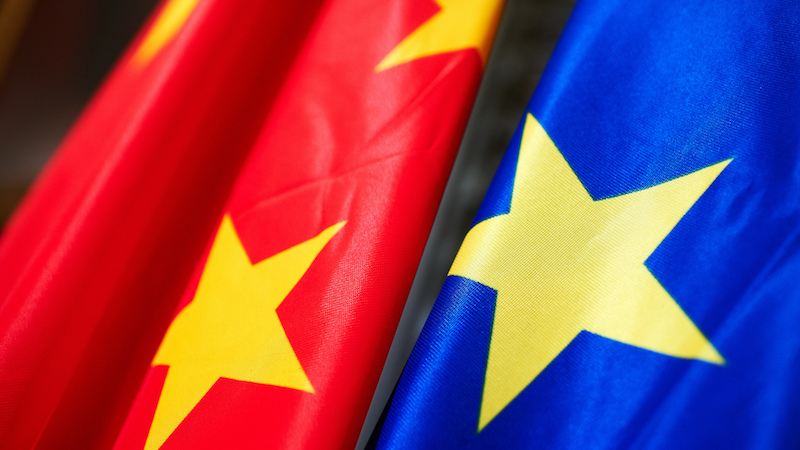In a long-awaited breakthrough, the EU and China have signed a joint agreement on climate change as part of the EU-China summit in Beijing.
This agreement comes a full year since the EU-China leaders’ statement on climate change and clean energy was first tabled but then derailed after a dispute on trade meant no summit communique was issued.
The text commits both actors to global leadership on climate action, in a wide variety of areas ranging from long-term climate strategies, to clean energy innovation, investment, cities and emissions trading.
In a moment when multilateralism and especially issues like climate change could have been seriously destabilised by the Trump US administration, this statement is the recognition the EU and China are still ready to step up their cooperation and take responsibility for setting the rules of the global climate change agenda.
EU and China agree sweeping joint statement on climate action
The EU and China have already signified their readiness to take on climate change leadership when establishing the Ministerial for Climate Action together with Canada in 2017. The leaders’ agreement now offers a comprehensive approach to climate action that combines leadership at UN climate negotiations level with concerted actions in other relevant multilateral fora. This multi-level and multi-sectoral approach turns previous statements of intent into a pragmatic agenda for cooperation.
Concretely, the pair agreed to promote the “effective implementation of the Paris Agreement in all its aspects” but also to ensure nationally determined contributions (NDCs) and pre-2020 commitments on climate are implemented, sufficient climate finance is unlocked prior to 2025 and support for the upcoming COP24 and the 2018 Talanoa Dialogue. Domestically the EU and China aligned further by pledging to make sure their NDCs are effectively implemented and to communicate their long-term climate strategies, currently under development.
This demonstrates a more mature and perhaps more strategic EU-China relationship. In previous years, the EU-China climate relationship has been hindered by their competing interests in clean tech markets, eventually leading to a trade dispute over solar panels in 2012 that remains a source of controversy. The EU is still distrustful of China’s willingness to open up its economy and provide what it considers a level-playing field for European companies and investments. The 2017 EU-China summit failed to agree a final communique as a result of such economic differences.
This year, the EU and China showed their capacity to overcome these issues and instead build on their growing alignment in these fields. Climate action is now enshrined at the centre of the EU-China relationship, and the agreement signals a significant deepening of cooperation, ranging from formulating their long-term climate strategies together, supporting China’s recently launched national Emissions Trading Scheme (ETS), energy labelling, promoting low emissions vehicles and exchanging experience on low-carbon cities.
Not all areas are covered with the same level of depth, but they reflect their intention to follow suit on their commitment. Transportation and interconnection of energy networks for example reflect China’s Belt and Road interest while areas such as green investment or cooperation with developing countries on sustainable energy are more exploratory at this stage.
If you like what we do, support us
Become a CHN patron for as little as $5 per month to help us keep bringing you the most in-depth coverage of climate politics and underreported stories from around the world.
We have set up a Patreon account. It’s a simple, safe and easy way for you to become part of a community that will secure and guide our future.
Thank you!
If realised, the expanded bilateral cooperation has the potential to spur not only environmental but also economic and political benefits for the EU and China, as well as creating momentum at international climate negotiation level.
But this progress is fragile. Real climate leadership must translate into protecting climate cooperation from the usual ebb and flow of EU-China relations, so that climate cooperation is not yet again disrupted as a result of economic or trade disagreements.
A sustained political focus on the outcomes of EU-China climate cooperation will also be needed to ensure the expanded technical and working level cooperation avenues do not become yet another ineffective venue on the long list of already existing EU-China dialogues and initiatives.
The EU and China passed the test this time. Their domestic alignment on energy and sustainability makes for a natural if not easy partnership. The real test, however, will come from translating this broad agenda of collaboration into tangible commitments to raise climate ambition – and ultimately change the emissions trajectory of both actors.
Léa Pilsner is a researcher at E3G in Brussels.
